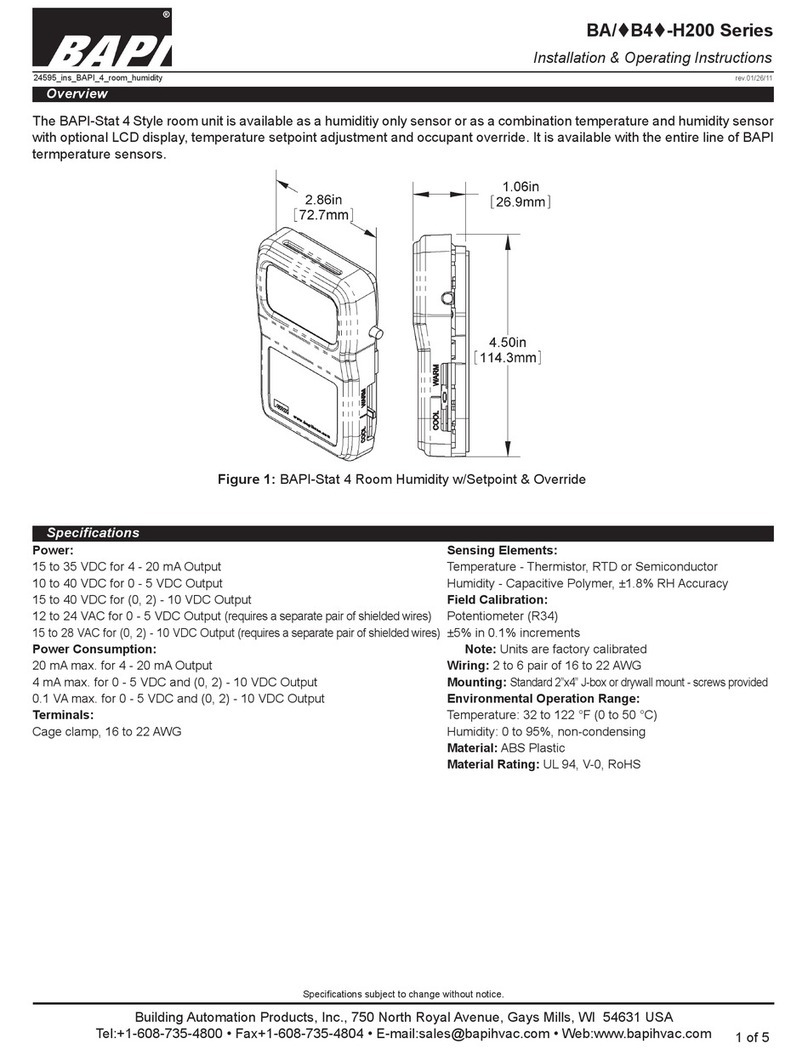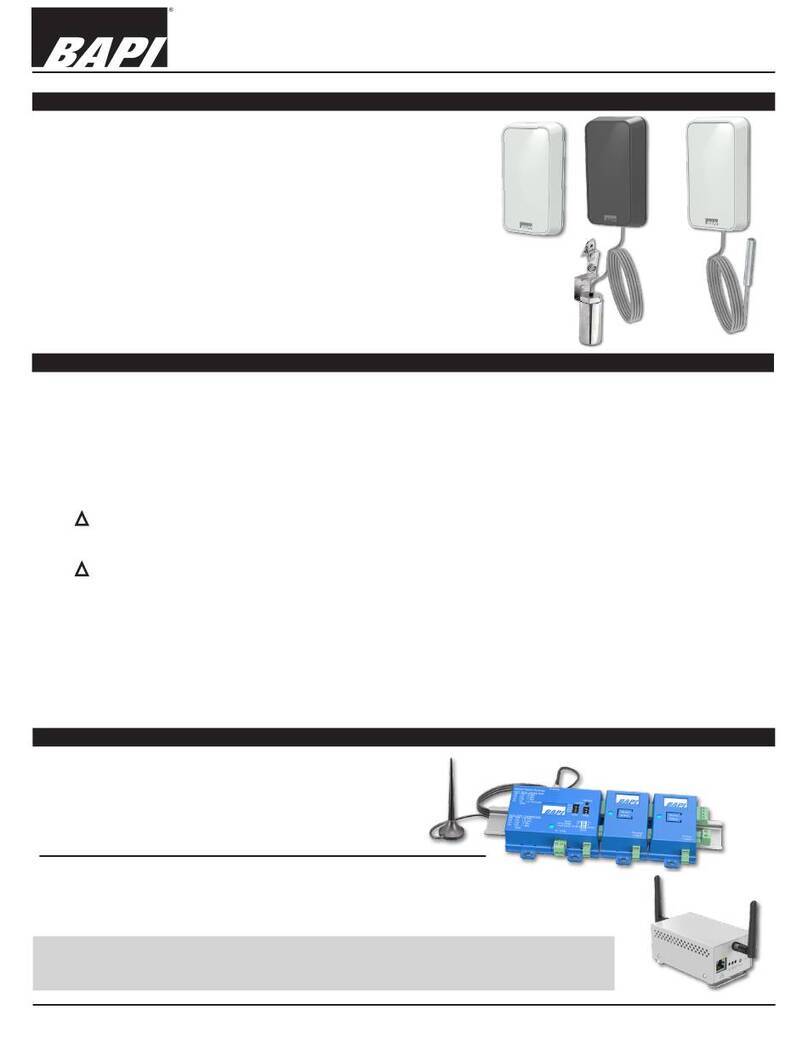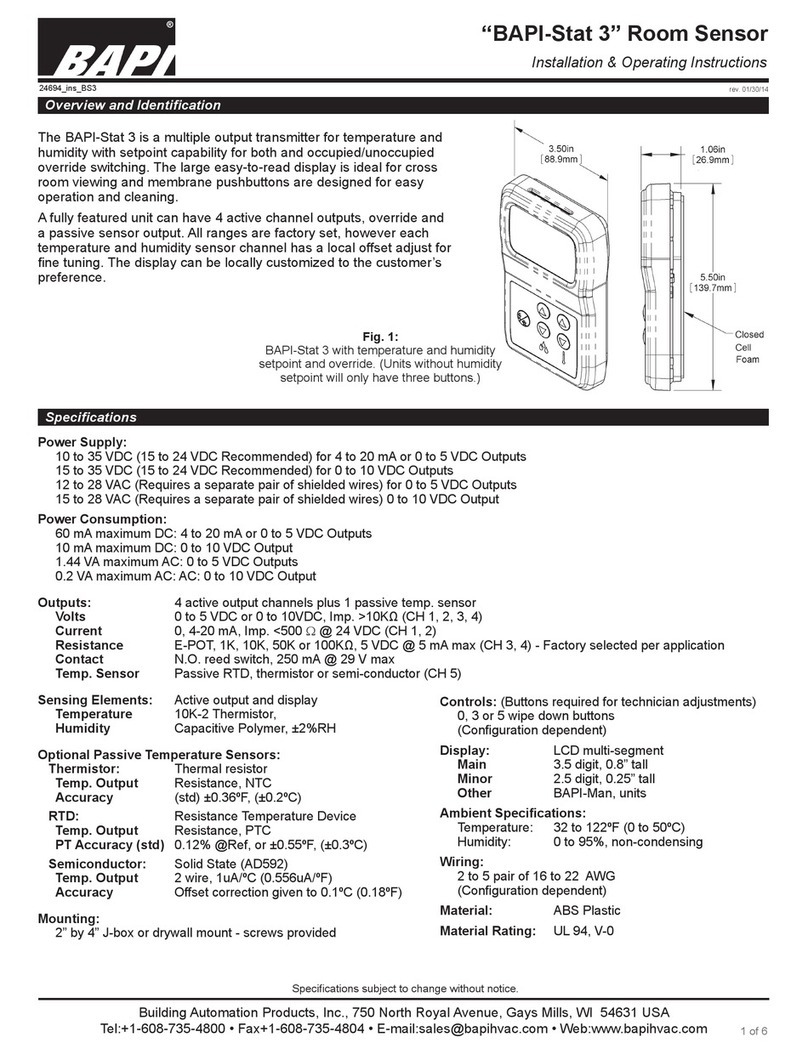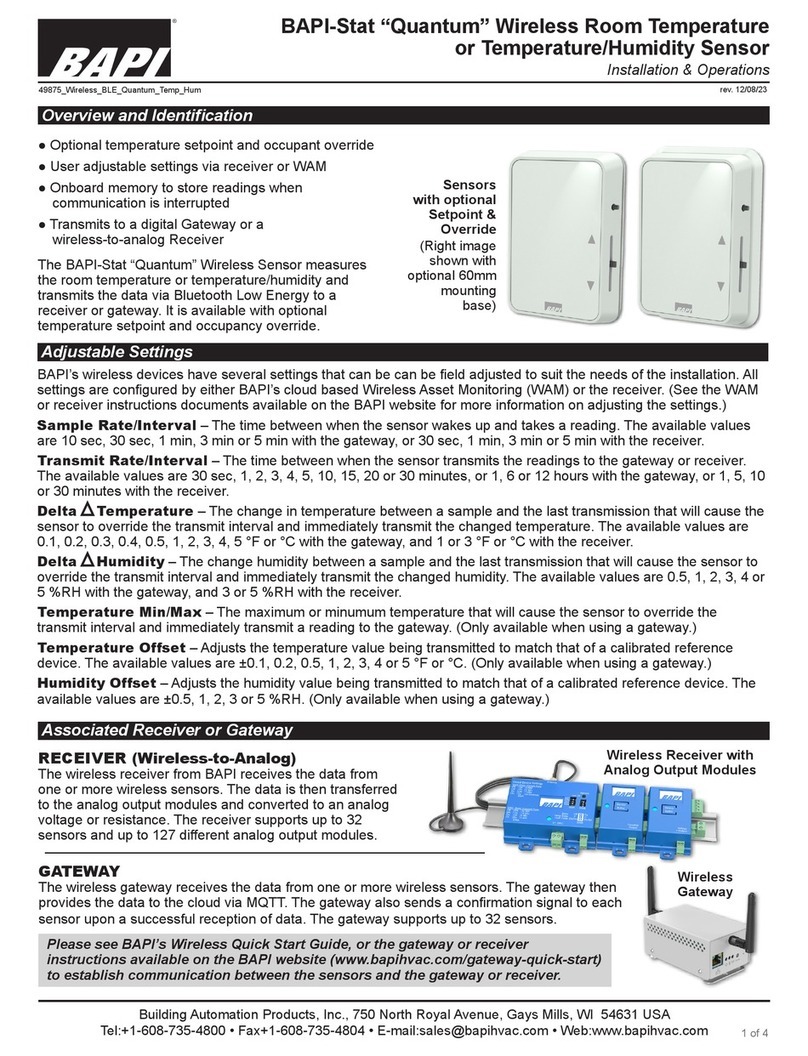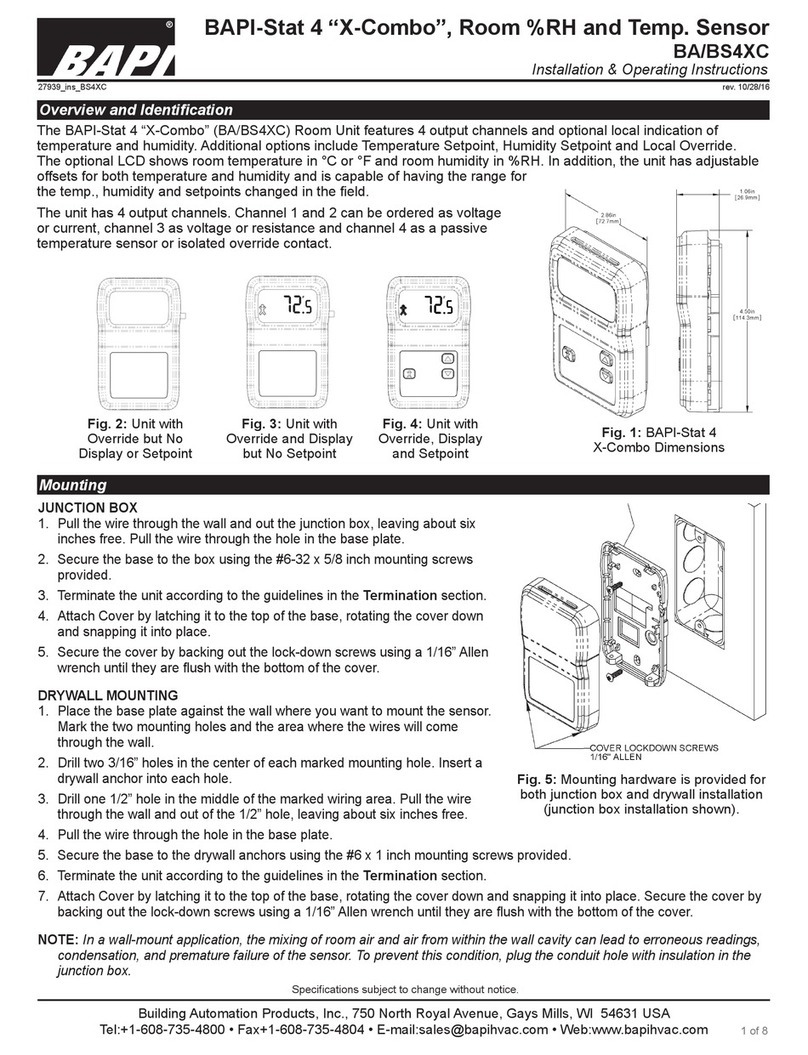
Installation & Operating Instructions
BAPI-Stat “Quantum” Temperature Sensor with Display
and Slider Setpoint
Building Automation Products, Inc., 750 North Royal Avenue, Gays Mills, WI 54631 USA
T
el:+1-608-735-4800 • Fax+1-608-735-4804 • E-mail:
[email protected] • Web:www
.bapihvac.com
Specications subject to change without notice.
rev. 04/23/1841012_ins_quantum_slider_temp_display
6 of 6
General Diagnostics
POSSIBLE PROBLEM: POSSIBLE SOLUTIONS:
Temperature reading is incorrect - Verify that the input is set up correctly in the controller’s and building automation
software.
- Check wiring for proper termination and check for opens or shorts.
- Check for corrosion at either the controller or the sensor. Clean off the corrosion,
re-strip the interconnecting wire and reapply the connection. In extreme cases,
replace the controller, interconnecting wire and/or sensor.
- Label the terminals at the sensor end and the controller end. Disconnect the
interconnecting wires from the controller and the sensor. With the wires separated
at both ends, measure the resistance from wire-to-wire with a multimeter. The
meter should read greater than 10 Meg-ohms, open or OL depending on the meter
you have. Short the interconnecting wires together at one end. Go to the other
end and measure the resistance from wire-to-wire with a multimeter. The meter
should read less than 10 ohms (22 gauge or larger, 250 feet or less). If either test
fails, replace the wire.
- Measure the physical temperature at the temperature sensor’s location using an
accurate temperature standard. Disconnect the temperature sensor wires and
measure the temperature sensor’s resistance across the sensor output pins with
an ohmmeter. Compare the temperature sensor’s resistance to the appropriate
temperature sensor table on the BAPI website. If the measured resistance
is different from the temperature table by more than 5% call BAPI technical
support. Find BAPI’s website at www.bapihvac.com; click on “Resource Library”
and “Sensor Specs” then click on the type of sensor you have. Don’t forget to
reconnect the wires.
- If the unit has a Test and Balance switch, make sure it is in the correct position.
Setpoint reading is incorrect - Make sure that the setpoint output is correct. Remove the setpoint output wire and
check the output for the correct resistance or voltage output. See the product label
for your specic range.
Override is not working correctly - Verify that the resistance across the override output is less than 15 ohms when the
override is pushed.
Specications
Power for 24VDC Power Units:
0 to 5 VDC Setpoint: ..... 9 to 40 VDC (24 VDC nominal)
0 to 10 VDC Setpoint: ... 15 to 40 VDC (24 VDC nominal)
Resistive Setpoint: ........ 9 to 40 VDC (24 VDC nominal)
Any Allowed Setpoint: ... 15 to 28 VAC (24 VAC nomimal)
Note: AC power requires a separate pair of shielded wires
Power Consumption: 13 mA max DC; .32 VA max AC
Wiring: 22 to 16AWG
Mounting: Standard 2x4” box or drywall (Screws provided)
Outputs:
Temperature: Thermistor or RTD
Temperature Setpoint: Resistive or Voltage
Fan/System Control: Resistive
Inputs: Dry contact (24V, <1mA)
Occupied: OCCUPY terminal “Grounded”
Unoccupied: OCCUPY terminal “Open to Ground”
External Sensor: 10K-2 thermistor,
Purchased separately,
Wired 25’ max from sensor
Enclosure Material: ABS Plastic, UL94V-0
Environmental Ambient:
Temperature: 32 to 122ºF (0 to 50ºC)
Humidity: 0 to 95% RH Non-condensing
Storage: 32 to 185°F (0 to 85°C)
Agency: RoHS






